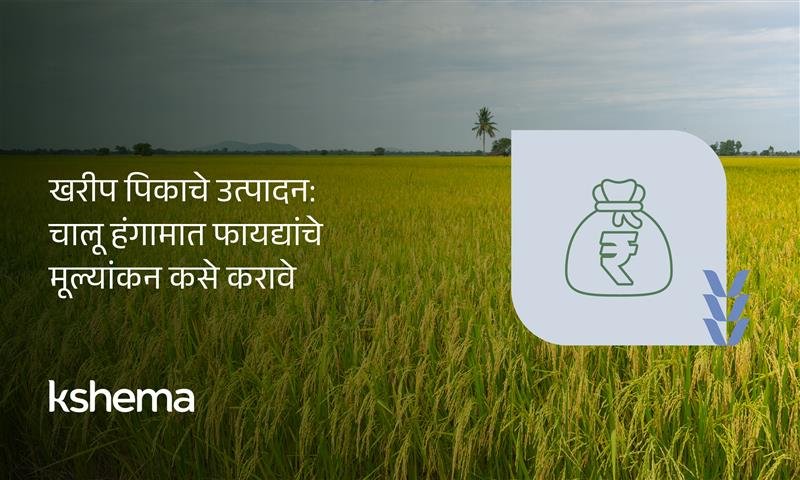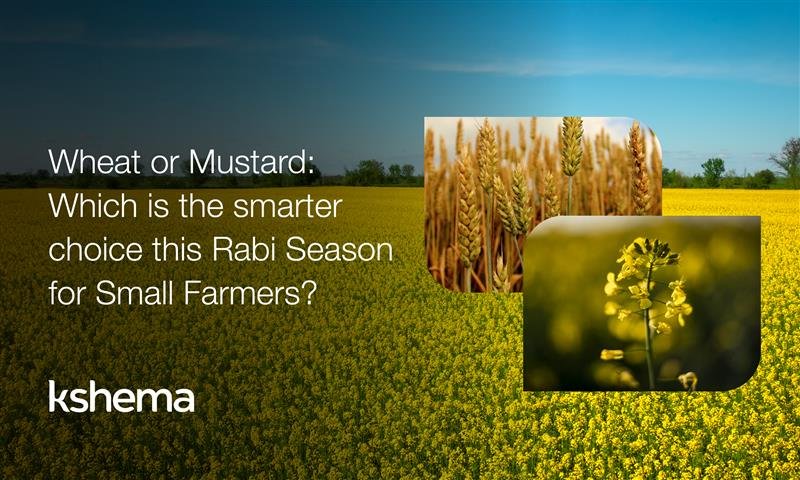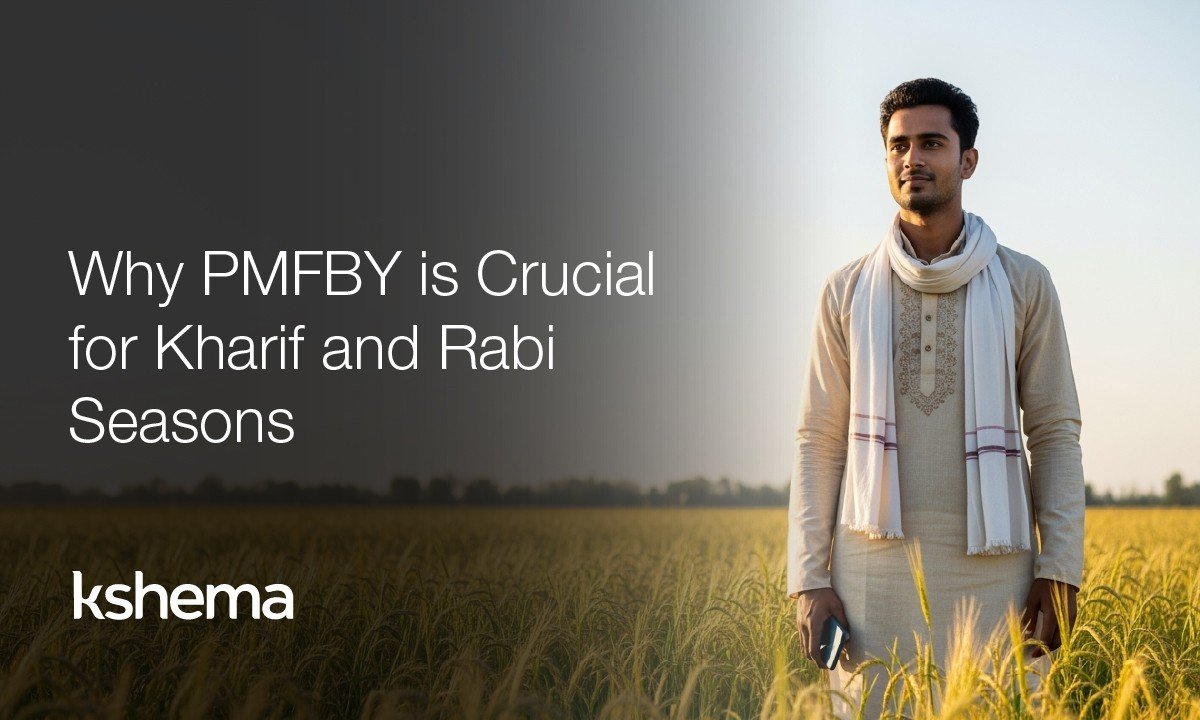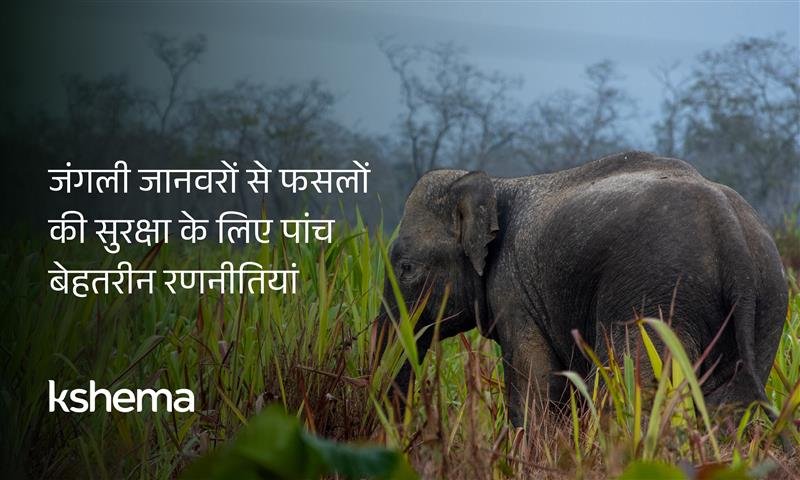7 Smart Ways to Prepare Your Farm for Kharif Season 2025
Kharif crops in India are sown with the onset of the monsoon (June–July) and harvested around September–October. Preparing for the season involves soil testing, choosing region-specific crops, managing water efficiently, and protecting against climate risks. Using tools like the Kshema App, farmers can access crop insurance and smart farming strategies tailored to their needs.
As the monsoon approaches, farmers across India gear up for the Kharif season—a critical time for sowing crops like paddy, maize, soybean, cotton, pulses, and groundnut. With unpredictable weather, rising input costs, and climate risks, smart preparation is key. Using the Kshema App, farmers can access crop insurance and planning tools tailored to their region and crop type.
The Kharif season is here, and appropriate preparation makes a considerable difference. With unpredictable weather patterns, increasing input costs, and growing climate-related risks, farmers today need more than just hard work — they need smart strategies. This blog offers guidance on how to prepare your farm for a successful Kharif season, ensuring maximum yield, sustainability, and peace of mind.
The Kharif season in India begins with the monsoon in June. Knowing the kharif sowing season, crop choices, and harvest months is key to success in 2025.
The Kharif season is here, and appropriate preparation makes a considerable difference. With unpredictable weather patterns, increasing input costs, and growing climate-related risks, farmers today need more than just hard work — they need smart strategies. This blog offers guidance on how to prepare your farm for a successful Kharif season, ensuring maximum yield, sustainability, and peace of mind.
Smart Farming Strategies for a Successful Kharif Season
1. Kharif Sowing Season 2025: Timeline & Tips
Kharif crops are typically sown with the arrival of the monsoon in June and harvested around October. Unlike Rabi crops, which are winter-grown and depend on stored soil moisture or irrigation, Kharif crops rely heavily on rainfall. Thus, planning well is crucial for this season.
Variations in rainfall, temperature, and pest outbreaks impact the success of Kharif farming. Hence, being informed and ready for different scenarios is the first step towards enjoying a productive season.
2. Soil Testing & Field Preparation for Kharif Crops
Before the sowing season begins, soil testing should be a priority. A simple test can reveal the pH value, nutrient levels, and organic matter content of your soil. Based on these results, farmers can choose suitable fertilisers or organic elements to balance the soil and enhance its nutrients.
A well-prepared field promotes healthy root development and enhances the crop’s resistance to disease and water stress
3. Choosing the Right Kharif Crop for Your Region
Selecting the appropriate crop based on your region’s climate, soil type, and water availability is vital. For instance, paddy is ideal for high rainfall areas, while groundnut and cotton may be better suited to drier regions.
It is equally important to choose a high-yielding, pest-resistant, and drought-tolerant variety. Farmers can consult their local agricultural extension centres or Krishi Vigyan Kendras (KVKs) for recommendations tailored to their local conditions.
4. Weather Forecasting & Water Management in Kharif Season
Access to reliable weather forecasts can help farmers plan their sowing and irrigation schedules. Several agri-tech apps and government portals now provide district-level rainfall predictions, which can guide decisions on when to sow and how much water to use.
Efficient water management is critical during the Kharif season. Installation of rainwater harvesting systems, maintaining field bunds, and adoption of methods like drip irrigation or mulching can be of great assistance to farmers. Conserving water at the beginning means better crop resilience later in the season.
5. Integrated Pest & Nutrient Management for Kharif Crops
Pests and diseases are a recurring challenge during the humid Kharif months. Adopting Integrated Pest Management (IPM) practices can reduce crop losses and lower chemical usage. Here’s how:
Nutrient management is just as essential. Overuse or underuse of fertilisers can both damage the crop and the environment. A balanced approach, guided by soil test results, ensures better productivity and sustainability.
6. Crop Insurance for Kharif Season 2025: Kshema Sukriti
Despite best efforts, farming always involves risk. Unseasonal rains, floods, animal attacks and more — any of these can destroy months of hard work in a single blow. That’s why having crop insurance is not just an option; it’s a necessity.
For the Kharif season 2025, opt for affordable and reliable crop insurance solutions offered by Kshema General Insurance that gives you peace of mind. With simplified processes, quick claim settlements, and responsive customer support, our policies are designed to protect your income when nature doesn’t cooperate.
Timely investment in crop insurance today can protect your tomorrow.
7. Agri-Tech Tools & Farmer Networks for Kharif Success
Agriculture is evolving, and staying updated with the latest techniques, schemes, and innovations can help farmers improve their outcomes. Attending local training sessions, watching videos in your local language, joining farmer communities online, and reading about government subsidies or new seed varieties are crucial for farmers
Remember, informed farmers are empowered farmers.
Kharif Harvest Months: When to Reap Your Crops
The Kharif season in India typically begins with the onset of the southwest monsoon in June, and crops are harvested between September and October, depending on the crop type and regional climate.
Quick Summary:
- Kharif sowing season: June–July
- Crops: Paddy, maize, cotton, pulses
- Ideal harvest months: September–October
- Insurance: Kshema Sukriti for monsoon risks
Final Thoughts
The Kharif season is not just a time to plant crops — it’s a time to plant hopes, dreams, and the future of your family. With smart preparation, timely actions, and the backing of trusted partners like Kshema General Insurance, you can face the season with confidence.
Make this Kharif season your most successful yet. Test your soil. Choose wisely. Insure wisely. And reap the rewards of your labour with pride.
Wishing all our farmers a prosperous and protected Kharif season 2025!
Learn more about our crop insurance policies to buy this Kharif season: Dial our toll-free number 1800 572 3013 today.
FAQs About Kharif Season Preparation
Q1. When does the Kharif sowing season start in India?
A: Kharif crops are sown with the arrival of the monsoon, typically in June and July.
Q2. Which crops are grown in the Kharif season?
A: Common Kharif crops include paddy, maize, cotton, soybean, groundnut, and pulses like urad and moong.
Q3. What are the ideal months for harvesting Kharif crops?
A: Most Kharif crops are harvested between September and October, depending on the region and rainfall.
Q4. In which season is paddy grown?
A: Paddy is a Kharif crop, grown during the monsoon season
Q5. What is the sowing period of Kharif crops in India?
A: The sowing period for Kharif crops typically starts in June and continues through July, depending on the onset of the monsoon in each region.










